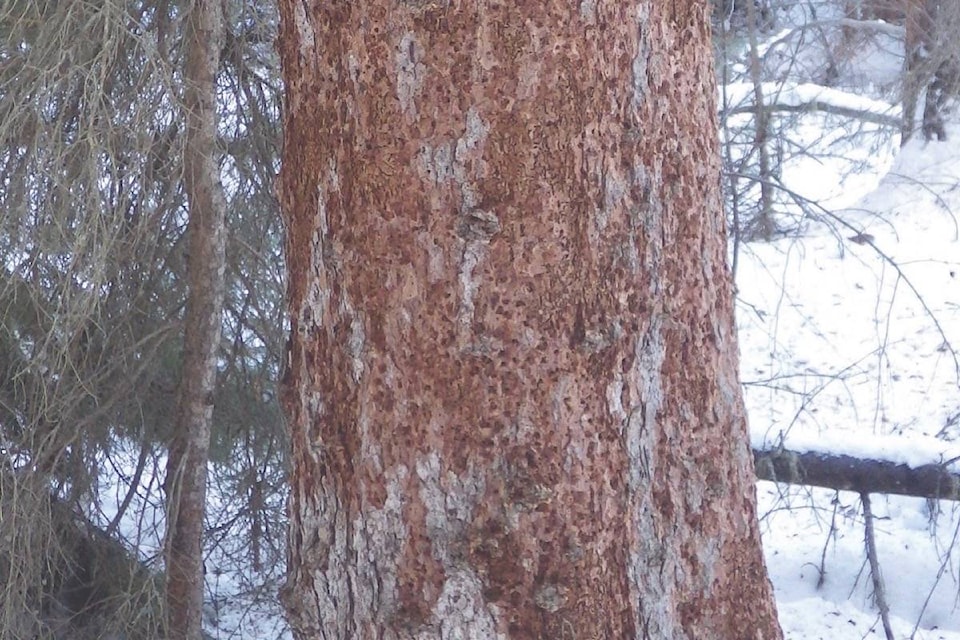The spruce beetle, a forest pest that is native to spruce forests and attacks the inner bark of these trees, continues to be a growing concern in B.C.
According to the province’s latest areal overview survey, the total infested area in B.C. has nearly doubled this year - from 283,083 hectares in 2016 to 501,873 hectares in 2017.
Over 8100 hectares of forests have been damaged by spruce beetle in the Lakes timber supply area (TSA) - a significant increase from 2016, when 1200 hectares had been damaged, and from the 58 hectares damaged in 2014.
READ MORE: Spruce beetle a growing concern
READ MORE: B.C. on high alert for spruce beetle
Frank Varga, general manager of the Burns Lake Community Forest (BLCF), said this is “definetely a concern.” However, he says the BLCF has not seen the impact of the spruce beetle just yet.
“I just came from a helicopter ride today and we were looking at exactly that, and we’re not seeing those concerns yet in our community forest,” he said Friday.
“Spruce beetle is known to peak and so is not uncommon; the bigger question will be whether the peaking subsides as it has in past years, or due to climate change becomes more of an epidemic outbreak,” he continued, adding that large outbreaks could have dramatic impacts to social, environmental and economic values.
“It is my understanding that spruce trees once attacked will not last nearly as long as has the pine, and so the ability to salvage value of dead stands will be shorten significantly.”
Although there are steps that can be taken to mitigate the impact of the spruce beetle, Varga says there’s not much that can be done to prevent the infestation.
“There definitely needs to be a strategic approach to manage the potential impact,” he added.
The spruce beetle is also a concern for the Chinook Community Forest. According to Ken Nielsen, Chinook’s general manager, signs of the infestation are being seen south of Francois lake.
While the situation has gotten worse in the Lakes TSA, the Morice TSA has remained fairly stable. Over 2900 hectares were affected in 2017 - similar to 2014.
The situation is much more severe in the Prince George TSA, where 275,108 hectares were affected in 2017 - almost double than the 142,837 hectares affected in 2016.
Bill Miller, Chair of the Regional District of Bulkley-Nechako, says the regional district has been “involved with this situation from early days” and has been engaging with the provincial government on how address the issue.
In addition to the annual aerial overview survey, the Ministry of Forests, Lands, Natural Resource Operations and Rural Development plans to carry out detailed aerial surveys to do a refined aerial detection of infestations for follow-up treatment.
The ministry will also carry out ground surveys to identify spruce beetle populations and provide information for treatments. Other actions planned include encouraging co-operative action with licensees to target infested timber for extraction, as well as using trap trees to absorb beetle populations for removal after the next beetle flight.
Spruce beetle outbreaks have historically lasted up to seven or eight years.
The Lakes TSA extends from Tweedsmuir Provincial Park in the south to the Tildelsy watershed in the north. It includes Burns Lake, Decker Lake, François Lake, Grassy Plains and Danskin.
The Morice TSA extends from Babine Lake in the north to Ootsa and Whitesail Lakes in the south. The main community is Houston, while the remainder of the population lives in smaller communities such as Topley and Granisle.
The Prince George TSA stretches from near the Alberta border in the southeast to Tweedsmuir Provincial Park in the southwest and Spatsizi Plateau Wilderness Park in the northwest. It includes Prince George, the towns of Vanderhoof and Fort St. James, and several smaller communities such as Fraser Lake.
@flavio_nienow
newsroom@ldnews.net
Like us on Facebook and follow us on Twitter.
